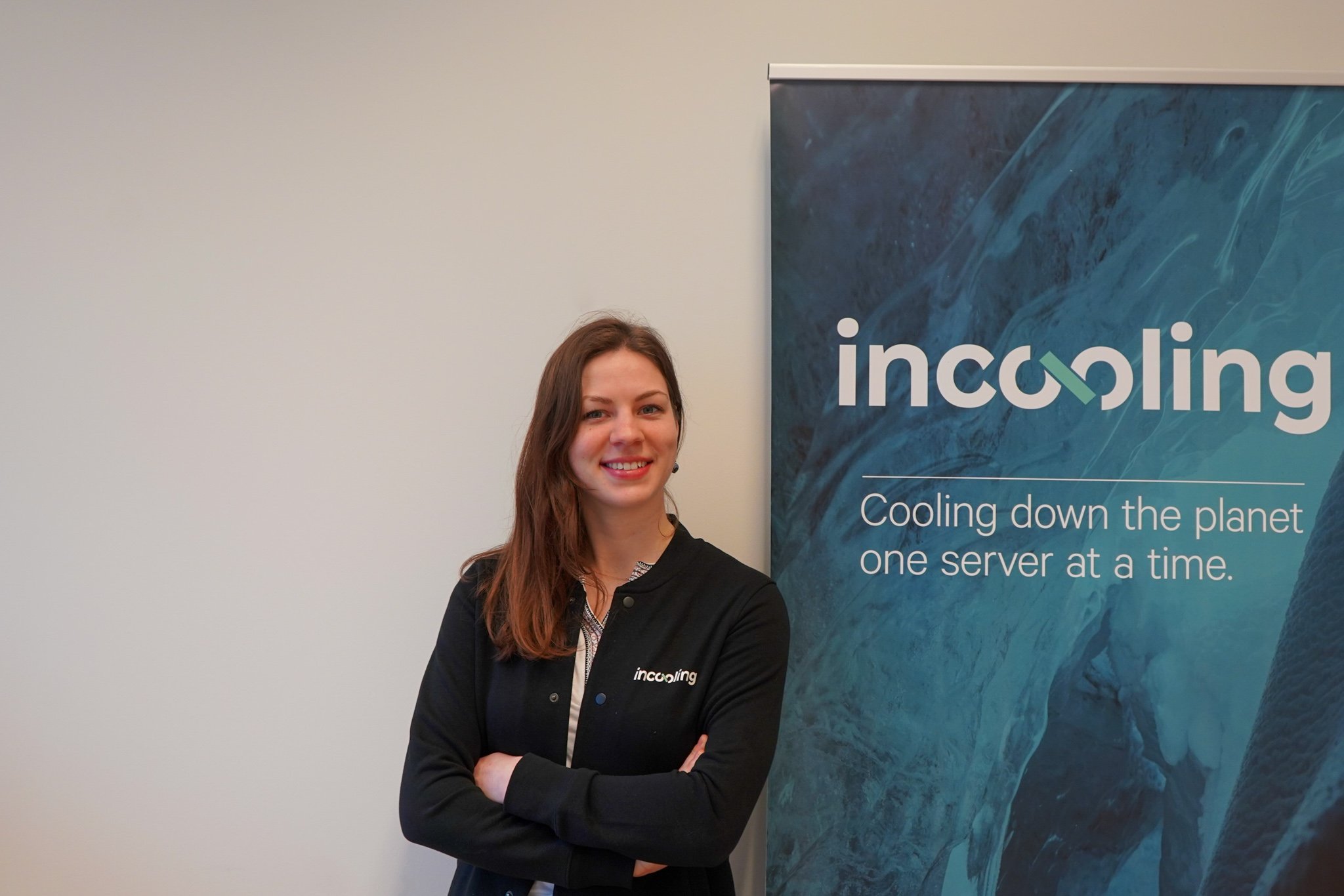
This day and age shows how much is possible online: Video conferencing, watching movies, visiting museums, sharing videos. All possible with super-fast chips, says Helena Samodurova, CCO of start-up Incooling. “That technology is constantly developing, but the infrastructure around it is lagging behind. For example, the way in which you can cool the chips.” From the High Tech Campus Eindhoven, the start-up is developing a cooling system for the chips.
Cooling chips
All the data we use online goes to data centers where there are servers that process that data. With the Internet of Things, Industry 4.0, 5G and Virtual Reality, data traffic is increasing more and more. And along with it, the energy consumption by data centers as well. A large part of that energy goes into cooling the servers that house the chips. Air conditioning and fans currently cool the entire space where these servers are located, Samodurova explains. “While the chips are actually the source of that heat.” Incooling developed a unit that cools the chips directly.
That direct cooling system is based on phase change technology, a technology that CERN uses. “Together with ASML, Philips and HighTech XL, CERN brought a number of technologies to this region with the aim of getting strategic deep tech ventures off the ground.” Samodurova was introduced to the technology during the HighTech XL program. That sounded the the start of Incooling. With the help of Rudie Verweij and others, Samodurova founded the start-up in 2018 as an answer to the ever-increasing energy consumption of data centers. Within just nine months, the idea became a prototype. The start-up also received an investment from Eindhoven Startup Alliance at the end of the program as well as an investment from an angel investor.
From liquid to gas
What is known as phase change is what makes the cooling of the chip possible. A closed loop system pumps liquid coolant to the heat source, in this case the chip. There, the liquid absorbs the heat. As a result, the coolant changes from a liquid state to a gaseous one. This is how it extracts the heat. The gas then condenses in a cooler location in the unit and returns to the chip as a liquid. “We are able to remove larger amounts of heat by cooling the chips this way. We can start using that heat in future to heat other parts of the building, for a start.”
“We wanted to introduce our product last year at the largest computer and technology trade fair in Asia. When that fell through, it gave us a chance to further improve the design.” If all goes well, the start-up plans to enter the market with the product by the end of this year. Until then, Samodurova is looking for companies that she can start a pilot with. “To find out about the latest improvements and to optimize the product. So that by the end of this year we can start production on a large scale.”
More visibility
A number of ‘neighboring companies’ next to the High Tech Campus Eindhoven (HTCE), have come forward, “but it is too early to name names.” Samodurova does mention the recent cooperation with French data center builder SPIE, which has around 48 thousand employees worldwide. The builder also has a facility at HTCE, where the cooperation was established “online,” Samodurova continues. “Together with SPIE, we are focusing on prospective pilots and customers where we can have our system installed. This cooperation is also going to help us a lot in terms of visibility.”
The HTCE is a convenient location for Samodurova. “I don’t think we would have been as successful in any other location than the HTCE as we are now. It is the best place for start-ups like us.” Samodurova especially lauds the willingness of everyone on campus to lend a hand. From big companies and from the HighTechXL program, but “just having a conversation with a smart engineer who has done this before makes a difference for such a small company like us.”
Growing
The start-up is growing and now employs ten people on campus. The team also has a number of members working elsewhere around the world. “It’s interesting to get new employees to join us on our mission to combat global warming,” That the start-up is expanding is great, but it also brings new challenges, Samodurova admits. “How do you communicate with each other and make sure that everyone knows what the company is doing? That’s doable with four and even six people, but with ten, it’s a much bigger challenge. Everyone is increasingly busy with only one part of the whole thing. You have to think up ways so that everyone keeps the common goal in mind. That’s how we learn to grow every day as a person, as a team and as a company.”

